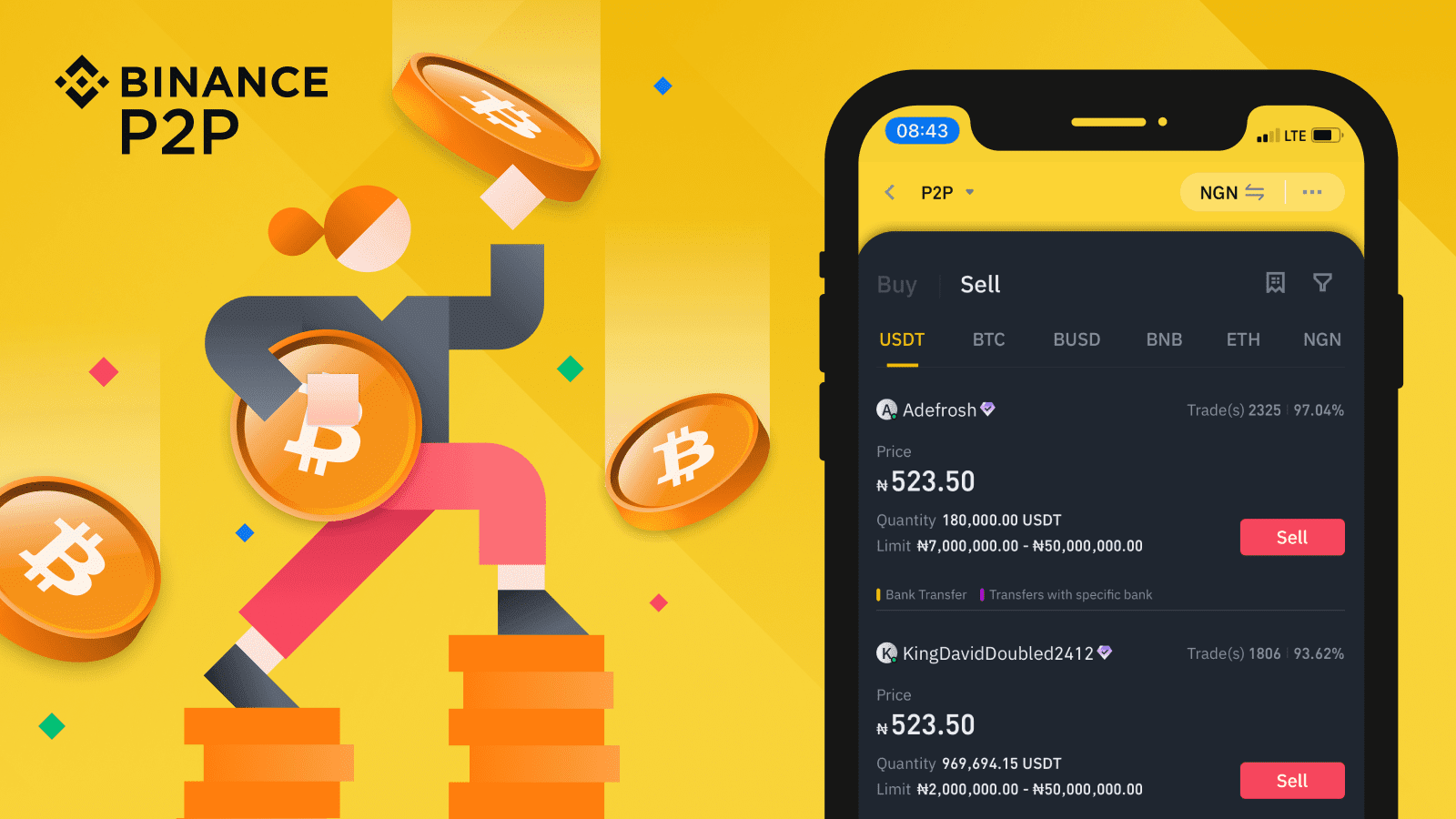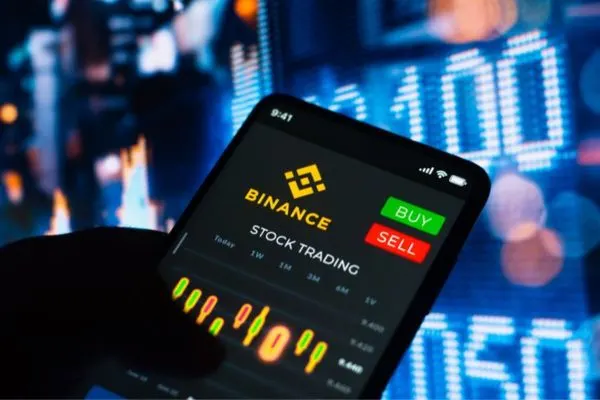Trading on Binance: Spot, P2P, Margin, Futures explained
Popular trading types on Binance

Binance Source
Trading on Binance focuses on Spot, P2P, Margin and Futures — core keywords users search for.
If you are new to the cryptocurrency market and just starting to use the Binance exchange for trading digital assets, you will surely feel very confused with terms like P2P, Futures trading, Margin borrowing, and so on. To help you better understand when buying, selling, and exchanging cryptocurrencies, DaKyBi would like to introduce to you the different trading methods available on Binance.
Spot — Immediate trading

Spot trading on Binance
Spot trading is one of the most popular trading methods on Binance, the world’s largest cryptocurrency exchange. Unlike futures or derivatives trading, spot trading allows users to buy or sell cryptocurrencies instantly, with the transfer and receipt of funds and digital assets taking place immediately afterward.
On Binance, users can engage in spot trading with more than 100 different popular cryptocurrencies, including well-known coins such as Bitcoin, Ethereum, Tether, Binance Coin, and many others. To start trading, users need to register an account on Binance, deposit funds from their bank account or e-wallet into their Binance account, and then place buy or sell orders at the market price. Binance charges a very low transaction fee, only about 0.1% of the trade value, helping users save on costs.
Spot trading offers users many advantages in terms of speed and cost. Below are the steps to carry out a Spot trade on Binance:
Step 1: Deposit funds into your Binance account, either in cryptocurrency or via bank card payment.
Step 2: Navigate to the Spot trading section on the Binance interface.
Step 3: Search for and select the cryptocurrency pair you want to trade, such as BTC/USDT.
Step 4: Enter the amount to buy or sell and set the order price.
Step 5: Confirm the order and wait for it to be executed.
Step 6: Check your trade history and receive the cryptocurrency you successfully bought or sold.
Step 7: Withdraw funds to your crypto wallet or bank account.
P2P — Peer-to-Peer trading
P2P (Peer-to-Peer) trading on Binance is a form of trading that allows users to exchange cryptocurrencies directly with one another without going through the exchange.
Specifically, with P2P trading, the seller will place a sell order for their cryptocurrency with a set price and quantity. The buyer can then search and place a buy order to complete the transaction. Both parties will contact each other directly to arrange payment, either in cash or via bank transfer.
The advantage of P2P trading is flexible exchange rates and fast payment without exchange fees. However, users also face higher risks, such as the possibility of losing money during the payment process.
Steps for P2P trading
Step 1: Choose the crypto to trade (BTC, ETH, USDT, etc.).
Step 2: Select Buy or Sell.
Step 3: Fill price, amount, and payment method.
Step 4: Post an ad or select a counterparty.
Step 5: Agree on details and verify payment instructions.
Step 6: Make or confirm payment as agreed.
Step 7: Confirm completion and release/receive assets in Binance.
Step 8: Keep records for dispute resolution if needed.
Margin — Leveraged trading
In addition to the basic form of Spot trading, Binance also supports a more complex and higher-risk method called Margin trading. Margin trading allows users to borrow cryptocurrencies from Binance through a financial leverage mechanism, enabling them to open trading positions larger than their initial capital.
Specifically, with a leverage ratio of 1:5, a trader only needs to deposit $1,000 to open a trading position worth up to $5,000. The remaining amount is borrowed from Binance as margin. This increases the potential for profits multiple times, but at the same time, the risk of losses is also higher since traders may face a margin call if the market price moves unfavorably.
Binance applies a margin loan interest rate ranging from 0–0.1% per day, depending on each account’s debt balance. This is a complex form of trading that requires traders to have solid knowledge and risk management skills.
Steps for Margin trading
Step 1: Complete identity verification (KYC).
Step 2: Deposit USDT (or other assets) as equity.
Step 3: Open the Margin trading interface.
Step 4: Choose your trading pair (e.g., BTC/USDT).
Step 5: Select Buy or Sell.
Step 6: Set quantity and leverage (up to product maximum, e.g., x125).
Step 7: Confirm the order.
Step 8: Monitor positions and risk ratio; adjust when necessary.
Step 9: Close positions for profit or respond to margin calls if losses grow.
Futures — Derivatives trading
In addition to regular trading methods such as Spot and Margin, Binance also supports futures trading. This is a form of derivatives trading that allows traders to speculate on whether the price of an asset will rise or fall in the future, without actually owning the asset itself.
On Binance, futures trades take the form of contracts that bet on the future price of Bitcoin, Ethereum, or stablecoins in the coming weeks or months. Traders can open long (buy) or short (sell) positions without the quantity restrictions of Spot trading. However, they must provide collateral (margin) and may face a margin call if losses exceed the allowable threshold.
With its highly speculative nature, futures trading carries significant risks but also promises substantial rewards if market trends are predicted accurately.
Steps to trade Futures
Step 1: Ensure you meet the minimum margin requirements.
Step 2: Open the Futures interface and select a contract.
Step 3: Decide your bias (Long or Short).
Step 4: Enter contract size and desired price.
Step 5: Confirm and place the order.
Step 6: Monitor price and manage positions (TP/SL).
Step 7: Close positions for profit or accept losses.
Step 8: Be mindful of liquidation thresholds.
Savings — Earn with savings
Savings trading on Binance is a new form of investment designed for users to earn passive income. Specifically, with Savings, users can deposit a certain amount of cryptocurrency into funds managed by Binance. Binance will then use these deposits for lending or other activities to generate profits.
A portion of the profits earned from utilizing the deposited funds will be shared back with users in the form of daily interest. Although it does not guarantee a fixed return, compared to simply holding cryptocurrencies, Savings helps optimize investment efficiency in a simpler and safer way.
Steps for Savings on Binance
Step 1: Prepare the crypto you want to deposit (BTC, ETH, BNB, etc.).
Step 2: Open the Savings section on Binance.
Step 3: Choose the asset and term (flexible or fixed).
Step 4: Enter the amount to deposit.
Step 5: Review expected yield and confirm.
Step 6: Track daily accrued interest.
Step 7: Redeem principal and interest at maturity or earlier (note early redemption rules).
Step 8: Consider compounding by re‑subscribing.
Binance Pools
Binance Pool is a service that allows users to participate in cryptocurrency mining more easily and efficiently compared to mining alone. Specifically, when joining Binance Pool, users contribute a portion of their hashrate to a shared mining process managed by Binance.
The mined cryptocurrency is then distributed based on each member’s contributed hashrate ratio. Binance fully manages the mining equipment and software, so users only need to provide their hashrate in order to participate. This way, users reduce the effort required for management while still receiving mining rewards.
This is a new approach that enables users to take part in crypto mining in a more convenient and safer way.
Steps to join Binance Pools
Step 1: Register a Binance account.
Step 2: Deposit funds to acquire the crypto you want to mine.
Step 3: Open Binance Pools and choose a coin (BTC, etc.).
Step 4: Configure PPS/PPLNS/SOLO preferences.
Step 5: Allocate available hashrate.
Step 6: Confirm and monitor mining results.
Step 7: Receive mining rewards daily.
Step 8: Withdraw mined coins when desired.
Binance Launchpool
Binance Launchpool is a new investment program introduced by Binance, allowing users to easily participate in new projects whose tokens are about to be listed on the exchange.
Specifically, in the Binance Launchpool program, users simply need to deposit certain supported tokens, such as BNB or BUSD, into a special Launchpool wallet. In return, they will receive new project tokens being issued at a 1:1 ratio to the deposited tokens.
This is an easy way to gain access to new tokens before they are officially listed on the exchange. Users have the opportunity to own tokens at favorable rates and potentially sell them for profit when the price increases. Binance also carefully selects projects to reduce risks for investors.
Steps to join Binance Launchpool
Step 1: Prepare BNB or BUSD for contribution.
Step 2: Open the Binance Launchpool page.
Step 3: Select an active project pool.
Step 4: Enter the amount of BNB/BUSD to contribute.
Step 5: Review terms and confirm participation.
Step 6: Wait for token distribution to your wallet.
Step 7: Check the received tokens.
Step 8: Hold long‑term or sell according to your strategy.